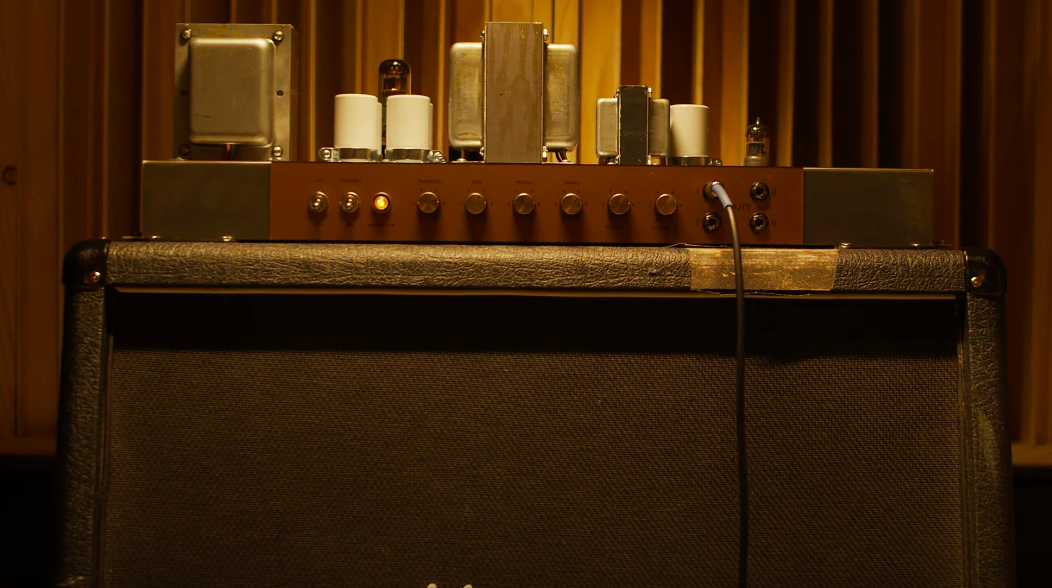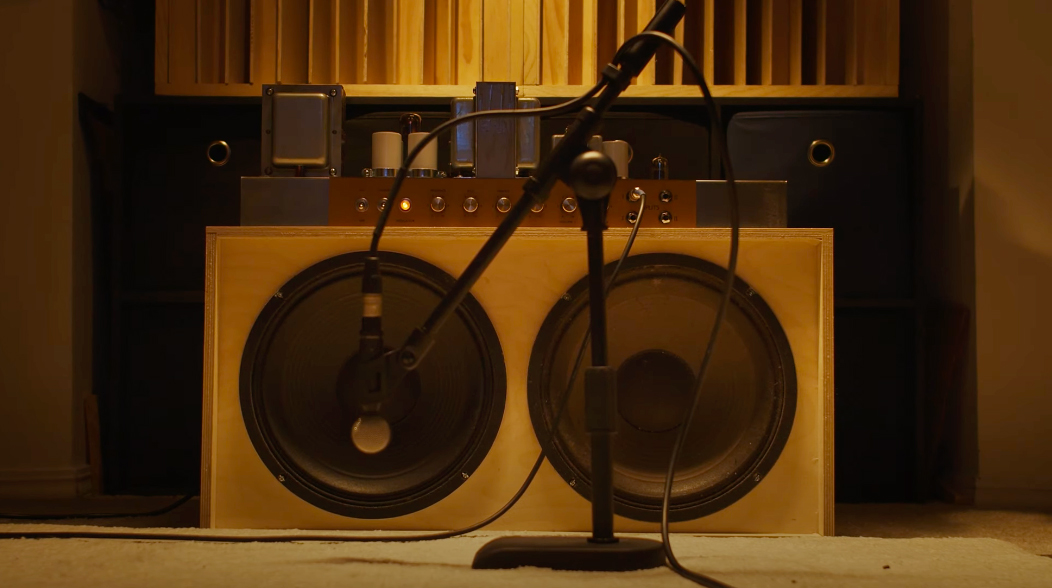
I recently talked in-depth with Aaron Rash about his YouTube videos investigating Kurt Cobain's Nirvana guitar tones and the plans he has for some exciting products for other players. But there's been a development since then – and it's a big one. Aaron is now the owner of the Frankensteined tube amp Cobain used for some of the clean tones on In Utero, that was originally rescued from a dumpster.
After his previous videos looked at the Steve Albini-owned aluminum guitar, pedals and the rare Fender Quad Reverb amp that are key elements of In Utero's guitar sounds, there was still a missing piece of the puzzle when it came to the cleans. Now, with the help of Cobain's guitar tech Earnie Bailey, Aaron has it.
"This is a crazy story," he says in the video above as he sits in in Robert Lang's Seattle studio – the place where Nirvana recorded their last session to track You Know You're Right and where Aaron has been capturing IRs for a forthcoming Nirvana pack.
By Aaron's own admission, getting the clean tones for In Utero has proved the biggest challenge in his Nirvana odyssey. "There's something so specific about In Utero and its clean tones that's always baffled me and I've never been able to get it quite right." With the IR pack, the need to solve that side of things became more pressing.
That's where Earnie Bailey has helped, a man who I've found out to be hugely helpful with questions about Kurt's gear (he's also a gifted luthier himself – check out Wire Instruments) Earnie has been supportive of Aarons videos, and became vital identifying the third In Utero amp (the others were the Fender Quad Reverb and solid state Randall Commander II combo) when producer Steve Albini was unable to.
Earnie Bailey was unable to fill in the blank because he knew it could be one of two amps that were involved in the sessions – one of which he had helped to (re)build. Aaron noticed a late '70s HiWatt Custom 100 DR103 in the Nirvana display when it was at the Museum of Pop Culture in Seattle – Krist Noveselic's own head he had donated. Earnie confirmed that Krist had mentioned that amp was used on the album, but was unsure of what it was used for exactly as Earnie's repaired 'Frankenstein' plexi Marshall head was also in action for the sessions.

What was unclear is which of the two amps was used for the bass tracks, because the other amp will have been used for some of Kurt's clean guitar tracks. As usual, Aaron planned to use his ears to find the answer. He found the same HiWatt model for sale online in San Francisco but the seller wouldn't ship. So Aaron made the 13-hour drive to collect it from Seattle. That's dedication. And his supportive wife even agreed to go with him.
Want all the hottest music and gear news, reviews, deals, features and more, direct to your inbox? Sign up here.
One problem – it didn't sound right. The HiWatt was used as the bass amp. This is where Earnie's knowledge was invaluable – he told Aaron that Mojotone's British 100 kit – a take on the Plexi with the options for Super Lead or Super Bass variations – was the best way to recreate his Marshall Frankenstein amp. The former Nirvana tech also shared his schematics of the work he'd done to the original Marshall (unclear whether it was a Super Lead or Super Bass) he'd pulled out of a dumpster, repaired and modded.

The results of the Frankenamp recreation nailed the tones you can hear on Rape Me and the In Utero session recording of the song Sappy.
"It's that last 5% I've been trying for so long to get," says Aaron.
But as Aaron told us, cabs and specifically the speakers in them make a huge different to guitar sounds. Kurt used a 2x12 Sound Tech cab with comparatively large Celestion 70 speakers. Aaron being Aaron, he recreated the cab from scratch because he couldn't find a cab as small as Kurt's original.
The nicest part of the story? He's named the amp Earnie.
And this tone odyssey leads to a great place for more than just Aaron and the Nirvana guitar curious; it is another link in the chain that will make Aaron's forthcoming Nirvana In Utero IR pack a comprehensive treatment.
Check out the whole video above and our interview with Aaron Rash here.

Rob is the Reviews Editor for GuitarWorld.com and MusicRadar guitars, so spends most of his waking hours (and beyond) thinking about and trying the latest gear while making sure our reviews team is giving you thorough and honest tests of it. He's worked for guitar mags and sites as a writer and editor for nearly 20 years but still winces at the thought of restringing anything with a Floyd Rose.

